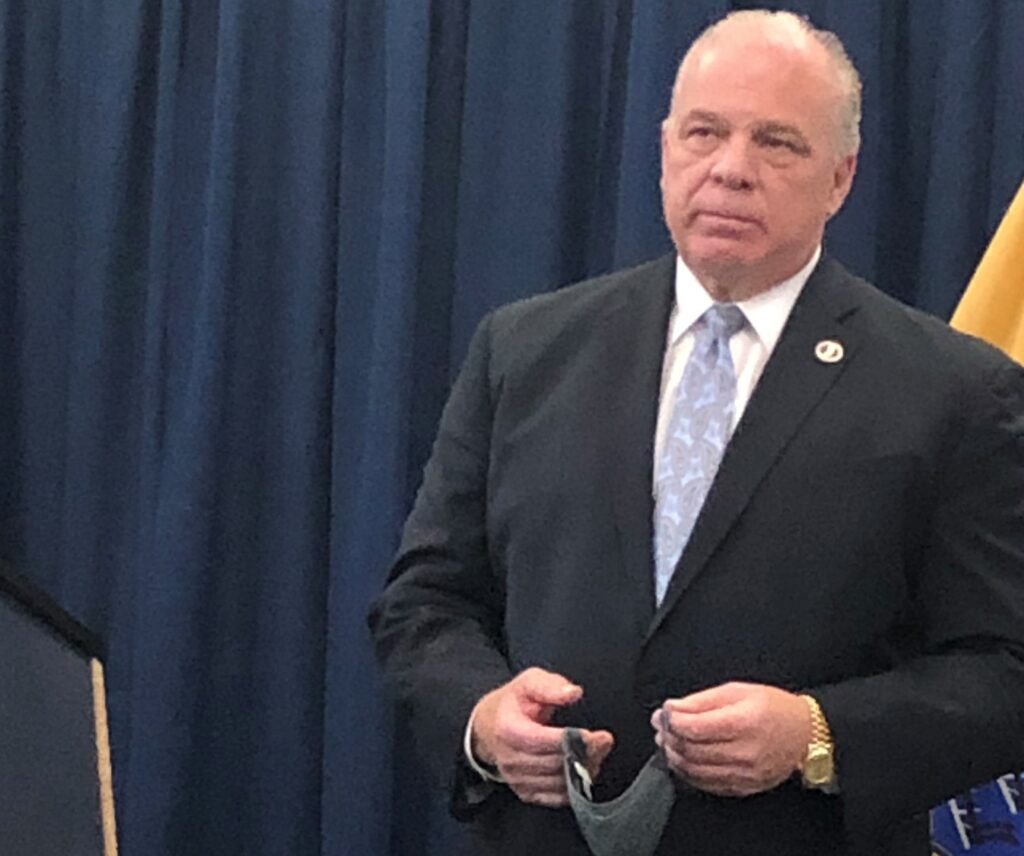ELEC: 2021 Featured Two of the Top Ten Most Expensive Races

Heavy spending in the 2021 legislative election led to two of the top ten costliest races of all time,
according to White Paper 31: “Legislative Election 2021- The Southern Tsunami.”
The research report by the New Jersey Election Law Enforcement Commission found that the 8th
legislative district race in 2021 ranked third all-time while the 2nd legislative district race ranked 5th.
Table 1
Top Ten Costliest Legislative Races by District
District Counties Year Total Spending Inflation Adjusted
3 Gloucester/Salem/Cumberland 2017 $24,102,940 $29,132,386
4 Camden/Gloucester 2003 $ 6,142,441 $10,152,620
8 Atlantic/Burlington/Camden 2021 $ 8,495,560 $ 9,535,112
12 Monmouth 2007 $ 5,963,939 $ 8,747,841
2 Atlantic 2021 $ 7,766,259 $ 8,716,570
2 Atlantic 2011 $ 5,806,467 $ 7,850,588
38 Bergen/ Passaic 2013 $ 5,910,318 $ 7,715,962
3 Gloucester/Salem/Cumberland 2003 $ 4,548,302 $ 7,517,725
1 Cape May/Cumberland 2007 $ 4,975,772 $ 7,298,408
38 Bergen/ Passaic 2011 $ 5,183,499 $ 7,008,309
Joseph Donohue, ELEC’s Deputy Executive Director and author of the report, said the $59.5 million cost of the 2021 general election fell far short of the $70.7 million record in 2017. The latter election featured a Third Legislative District showdown that was the most expensive legislative campaign in United States history.
“While it set no new record, the 2021 general election still was the second most expensive legislative
contest in dollars unadjusted for inflation,” Donohue said. “Factoring in inflation, it ranked fifth among election years since 2001 when both houses were up for grabs.”
The election whittled down the Democratic majority from 77 total legislative seats to 70.
After a Republican Senator changed parties, Democrats now hold 71 of the 120 seats. The margins are
25-to-15 in the state Senate, and 46-to-34 in the state Assembly.
Table 2
2021 Election Spending Versus Other Elections With Both Houses Running
Year Total Spending In 2023 Dollars
2017 $70,726,901 $87,752,775
2013 $58,822,048 $76,792,597
2003 $44,995,112 $74,370,807
2007 $47,396,847 $69,521,182
2021 $59,475,800 $66,239,103
2011 $45,859,772 $62,004,343
2001 $35,716,857 $61,369,834
Spending by independent committees funded by special interests played a major role in 2021 as they have in New Jersey elections since 2009.
Fifteen independent groups combined spent $14 million on the 2021 general election (See Table 26). It
was the third largest expenditure by independent groups since 2009. Only spending in 2017 and 2013 was higher.
Since 2011, four fund-raising committees established with the main purpose of electing southern New
Jersey candidates have spent a combined $33.8 million on legislative elections.
Table 3
Top Ten Independent Spenders in Legislative Elections- 2011-2021
(Primary and General Elections)
Amount
American Democratic Majority, General Majority PAC, General Growth Fund, Fund
for Jobs Growth and Security* $33,846,302
Garden State Forward (New Jersey Education Association) $21,882,943
Carpenters Action Fund, Carpenters Fund for Growth and Progress, Working for Working
Americans (Carpenters) $ 6,546,405
New Jerseyans for a Better Tomorrow $ 6,431,203
NJ Coalition of Real Estate, National Association of Realtors Fund $ 3,754,163
Stronger Foundations Inc (Operating Engineers) $ 2,534,723
Republican State Leadership Committee $ 1,447,187
NJ United $ 1,411,073
Better Education for NJ Kids Inc. $ 1,002,653
Americans for Prosperity $ 900,000
Total $79,756,652
*Fund-raising committees set up primarily to elect southern NJ candidates.
Following a long-time ELEC recommendation, the Legislature expanded disclosure requirements for
independent expenditure committees.
Independent expenditure groups that participate in state, county or local elections must now disclose
contributions above $7,500 as well as all expenses.
For a general election, they must do so 29 days and 11 days before an election, and 20 days after. Reports must disclose all campaign finance activity beginning January 1 of the election year unless pre-general election activity was disclosed in a primary election report.
While expanded disclosure is welcome, it falls short. The new law, which in bill form was entitled “The
Elections Transparency Act,” exempted independent expenditure groups from promptly disclosing contributions and expenditures that occur within the last 13 days before an election. Under the old law, their significant last-minute expenditures were publicly disclosed.
It is recommended that the contribution disclosure threshold for independent expenditure committees be lowered from $7,500 to $5,000, which is the donor disclosure threshold for 501(c) 4 reports filed with the Internal Revenue Service.
In addition, lawmakers should require disclosure of contributions above $5,000 within the final 13 days
of the campaign subject to the same turnaround time as candidates, parties and traditional political action committees.
In addition, independent expenditure groups should be required to disclose all expenditures above $200 within the 13-day pre-election period.










Leave a Reply